Hi there, This is Jiaqi from China. I am currently studying media and communication degree in Malaysia. I will be sharing what I learned here, hope you like them.
Don't wanna be here? Send us removal request.
Text
The Role of Social Media and Crowdsourcing in Crisis Management
Natural disasters are unpredictable and frequently cause significant human and material losses. With the development of society and technology, we can now use some modern, powerful, and complicated decision-making systems, which have improved the accuracy of responses and the effectiveness of actions. One method is crowdsourcing, which helps combine environmental disasters with human factors and enhances understanding of social processes. Crowdsourcing allows us to gather more information and expand the range of solutions, leading to faster and more accurate disaster responses (Tavra, Racetin & Peroš, 2021). Let us begin to examine the concepts of networks, communities, and the public in the context of crises and social media use, understanding crowdsourcing and the uses of open social media platforms, as well as exploring the role of social media in communication and response during recent disaster events.

Social media serve as platforms for information distribution, multidirectional communication, witnessing, and other types of network actions which are considered an integral part of the outbreak and dissemination of disaster information (Misman 2024). When a crisis occurs, the network refers to the interconnected network of individuals and organizations that can collaborate and share information during the crisis. For example, people can use this network to quickly understand the situation in the affected areas and coordinate actions with other relief agencies after an earthquake. Communities represent groups of people with common interests or characteristics who can support each other during disasters. For example, local communities can organize to provide shelter and food when floods occur. On the other hand, the public is a broader audience that consumes and participates in crisis information, shapes public opinion, and influences decisions. For example, through social media platforms, the public can learn about the latest disaster situations and express their views and needs to governments and relief agencies.
Social media and crowdsourcing (SMCS) are becoming increasingly useful in responding to the impact of natural and man-made disasters. SMCS allows different stakeholders to share critical information during the disaster management process and enhance community resilience through participation and collaboration. Social media platforms are powerful networks connecting individuals and organizations, enabling rapid dissemination of information and coordination of response efforts. These platforms allow real-time communication, which is crucial for sharing the latest news, coordinating rescue operations, and mobilizing resources. By allowing the public to participate in data collection, analysis, and decision-making processes, crowdsourcing can respond more comprehensively and timely to disasters. Governments at various levels are increasingly integrating SMCS services and technologies into crisis management, whether based on local activities or global connections. Advanced learning through the use of SMCS during disasters can enhance social resilience, improve society's ability to adapt to disasters, and more effectively respond to challenges in future disasters (Clark et al. 2024).

Ogie and the other 5 people stated that social media platforms have proved to be vital sources of information to support disaster response and recovery. For example, during the 2020 Australian wildfires, Twitter as one of the social media platforms were used for media communication. People use it to post requests for help, share the latest information, and coordinate rescue efforts. The posts also include discussions of reasons and responsibilities, as well as calls for better climate change action. Tweets have been used to hold governments accountable for failing to take early action on climate change and to demonstrate responsiveness and leadership in times of crisis (Ogie et al., 2022).
In conclusion, networks, communities, and the public play important roles in formulating crisis response measures, especially when social media and crowdsourcing come into play. Understanding these concepts is crucial for developing effective crisis management strategies and fully leveraging the potential of social media in disaster response and recovery efforts.
References:
Clark N, Boersma K, Bonati S, Fonio C, Gehlhar S, Habig T, Larruina R, Lüke R, Morelli S, Nielsen AB, Opromolla A, Pazzi V, Raju E. Exploring the impacts of social media and crowdsourcing on disaster resilience. Open Res Eur. 2024 Jan 5;1:60. doi: 10.12688/openreseurope.13721.3. PMID: 38380383; PMCID: PMC10877096.
Misman, N 2024, ‘Week 12: Crowd sourcing in times of crisis’, MDA20009 Digital Communities, Learning materials via Canvas, INTI International College Subang, 14 June, viewed 16 June 2024.
Ogie, R., Moore, A., Wickramasuriya, R., Amirghasemi, M., James, S., & Dilworth, T. (2022). Twitter data from the 2019–20 Australian bushfires reveals participatory and temporal variations in social media use for disaster recovery. Scientific Reports, 12, 16914. https://doi.org/10.1038/s41598-022-00534-5
Tavra, M., Racetin, I. & Peroš, J. (2021) 'The role of crowdsourcing and social media in crisis mapping: a case study of a wildfire reaching Croatian City of Split', Geoenvironmental Disasters, 8(10).
0 notes
Text
Social Conflicts and Governance in Digital Communities
As a digital citizen, have you ever experienced or been involved in online trolling, flaming, or harassment intentionally or unintentionally? While social media provides a powerful platform for sharing ideas and connecting, conflicts still arise in the digital world. The online platforms' anonymity and online characteristics can enhance problems such as intentional attacks, verbal abuse, and harassment. Let us explore the forms of generating social media conflict, examine social media governance and regulation, and the role of digital citizenship in addressing these challenges and promoting a healthier online environment.

Different reasons could cause conflicts, including differences of opinion, misunderstandings, provocation, verbal abuse, and harassment. Unlike the real world, online communications lack face-to-face interaction, and anonymous leads to more misunderstandings and conflicts, resulting in serious behaviors that may not be done in real life. Jones and his team suggest that cyber harassment is the use of new technological channels including the Internet, text messaging, and so on ways, to directly target another person with threats or other unwanted and offensive behaviors, posting them on the Internet for others to see, which may unintentionally or otherwise cause harm to another person. Online harassment can take many forms, such as spreading malicious rumors, sending abusive direct messages, and sharing personal content without consent. Online hate crimes can include any form of online communication that could motivated by hostility or prejudice towards any individual or group. For example, gender, sexual orientation, race,etc. A study in England suggests that online harassment is so common in digital spaces that it is often seen as the "norm" (Haslop, O’Rourke, & Southern, 2021).
On social media and other online platforms, having different opinions is normal because constructive disagreement is a fundamental characteristic of democratic societies. However, in this process, the governance and regulation by various sectors such as law, companies, and social media platforms play a crucial role in managing online conflicts. Different countries have different laws and regulations regarding online harassment, aimed at balancing freedom of speech with the control of harmful content, to ensure transparency and fairness of speech while protecting users from harassment and bullying (Stanford School of Humanities and Sciences 2024).
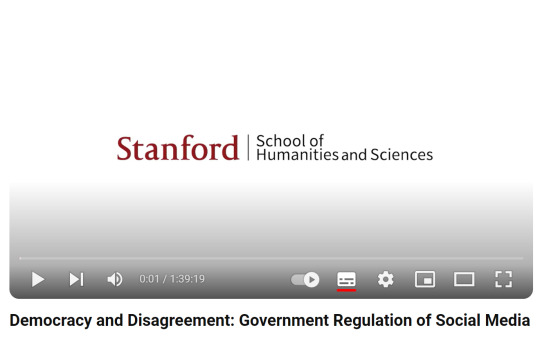
In addition, organizations and individuals are also working to raise public awareness of online harassment issues. This includes educational activities, community advocacy, and awareness campaigns aimed at promoting online safety and positive interactions. Meanwhile, social media companies also bear significant responsibility. They have implemented various community guidelines and policies to address harassment, hate speech, and other harmful behaviors. These measures are intended to maintain a safe and friendly environment on social media platforms, allowing users to express their opinions freely without fear of attack or discrimination (Misman 2024). As digital citizens, we shall also help to maintain a healthy online environment. It is important to have respectful communication even when disagreements arise with others. In certain situations, it is necessary to report harmful content and behaviors once someone harmed us.
In conclusion, while social media provides a platform for expression and connection, conflict can still occur. Understanding these conflict-generating forms, the role of social media governance, and the importance of digital citizenship can help us to address and mitigate these challenges, thereby promoting safer and more inclusive online communities.
References:
Haslop, C., O’Rourke, F., & Southern, R. 2021. #NoSnowflakes: The toleration of harassment and an emergent gender-related digital divide, in a UK student online culture. Convergence, 27(5), 1418–1438.
Misman, N 2024, ‘ Week 11: Digital Citizenship and Conflict: Social Media Governance’, MDA20009 Digital Communities, Learning materials via Canvas, INTI International College Subang, 7 June, viewed 15 June 2024.
Stanford School of Humanities and Sciences 2024, Democracy and Disagreement: Government Regulation of Social Media, 25 May, viewed 15 June 2024, < https://youtu.be/WUEi9MHUcTs?si=Qd7_oqmOGx4175ee>.
0 notes
Text
The Rise of Social Gaming: Connecting Global Players in an Interactive World
Do you like playing games with family and friends? The gaming industry offers a variety of games that is suitable for user with different preferences, including arcade games and local multiplayer games to online multiplayer games (Misman 2024). Among these, social games is very popular because it emphasize interaction, community, and revenue generate. Let's dive into the gaming world, explore its history, gaming platforms, and discuss the pros and cons of social gaming, as well as its economic impact.

If gaming is the voluntary attempt to overcome unnecessary obstacles, why do so many people enjoy playing games?(Suits, cited in Misman 2024).Let us start with the arcade games, they are fast-paced games requiring quick reflexes and coordination. For example, the Street Fighter and Taiko no Tatsujin are hits until now. Local multiplayer games are designed for friends or family to play together on the same device, such as Super Smash Bros. and Mario Kart, suitable for fostering party games and family game nights. And, online multiplayer games allow players to connect and play together over the internet, such as World of Warcraft and Fortnite.

With the development of the internet and social media platforms, social gaming has become a popular trend. Social games means played on social media platforms or mobile devices, allow players to easily invite friends, share achievements, and compete, fostering a strong sense of community. According to Järvinen (cited in Misman 2024), social gaming involves adjusting your friendship bonds while integrating the games into your daily life. However, social media can lead to privacy concerns, as personal information might be shared without explicit consent. Platforms are inherently fluid, “promiscuous”, even “slutty” in their exposure of our lives and data (Chun & Friedland cited in Aleena Chia et al., 2020). Additionally, by using the' "friends" networks to acquire and retain new players can increase the risk of addiction.
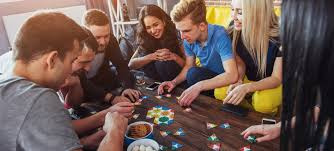
Social gaming platforms serve as bridges connecting players, enabling them to gather, compete, and share tips, then promoting interaction and community building. These platforms create diverse and inclusive spaces, such as Facebook Gaming, which offers easy integration with Facebook friends, live streaming, and community groups. Popular games on this platform include Farmville, Candy Crush Saga, and Words with Friends and so on. Mobile games on iOS and Android feature high accessibility, casual games, and social media integration. Live streaming platforms such as Twitch, YouTube Gaming, and Facebook Gaming provide real-time interaction, monetization opportunities, and community engagement.
Social gaming drives revenue through various channels including microtransactions, it means the player need to purchase the game which generates significant revenue. Also, advertising is a method that always used by free games. Sponsorships and partnerships are used by streamers and gaming influencers collaborating with brands to promote products and services to their audiences.
Social gaming fosters stronger communities, provides new economic opportunities, and game experience. However, it also raises concerns about privacy and addiction. As the gaming world continues to evolve, it's essential to play games carefully, ensuring that the core joy and connection of gaming are preserved. You can share your favorite game type and thoughts in the comments! Maybe you can find friends here.
Reference:
Aleena Chia, Brendan Keogh, Dale Leorke, and Benjamin Nicoll (2020). "Platformisation in game development", Internet Policy Review 9 (4). DOI: 10.14763/2020.4.1515. https://policyreview.info/articles/analysis/platformisation-game-development.
Misman, N 2024, ‘ Week 10: Gaming Communities, Social Gaming and Live Streaming: Twitch’, MDA20009 Digital Communities, Learning materials via Canvas, INTI International College Subang, 31 May, viewed 15 June 2024.
0 notes
Text
Have you ever tried taking a selfie with filters?
If yes, do you love using them? Filters allow users to change their appearance with just a tap of the screen, your selfie may be added with dog ears or make-up, or transforming you into anime characters, and so on. While face filters are a fun experience for most people, their widespread use may causes important questions about self-perception and beauty standards in the digital age.

Filters allow the user to see the real world, with virtual objects superimposed upon or composited with the real world (Azuma 1997, p. 355). Most filters can add interesting elements to our faces, such as glasses or hats, or can be slimmer, peel, brighten eyes, provide virtual make-up, etc. It's a game-changer for our online presence! However, there are advantages and disadvantages to this feature. The good side is filters can provide instant user satisfaction, temporarily hide flaws and show the prettiest moments effortlessly on social media. Another benefit is that some of the filters are very fun and cool which is why they are popular among many young people. Filters can also fulfill the desire to try a variety of styles, or different looks without having to make any permanent changes, such as changing gender, changing hair color, or even changing eye color.

However, these changes are all temporary and only exist in the virtual world. If the users stop using this feature, they will feel different, which may change their self-perception (Misman 2024). At the same time, the changes that filters make to the human face, such as thinning the face, enlarging the eyes, and plumping the lips which all result in the same beauty standards that do not correspond to reality. Sometimes, it may create pressure for users to want to be the same as the corresponding standards in various ways including makeup and plastic surgery, which may affect mental health and self-esteem, and may even cause anxiety about appearance and body figure. Therefore, it is important to maintain the balance between the filters and the real appearance.

In conclusion, filters are beneficial in shaping our self-image and social interactions, but we also must use them with caution, and pay attention to self-awareness, and self-judgment among digital beauty standards. By understanding the benefits and harms, we can enjoy the fun side of filters without knowing the beauty of unfiltered reality.
Reference:
Azuma, R.T., 1997. A survey of augmented reality. Presence: Teleoperators and Virtual Environments, 6(4), pp.355-385. viewed 11 June 2024, https://www.cs.unc.edu/~azuma/ARpresence.pdf
Misman, N 2024, ‘ Week 9: Digital Citizenship and Software literacy: Instagram Filters’, MDA20009 Digital Communities, Learning materials via Canvas, INTI International College Subang, 24 May, viewed 10 June 2024.
0 notes
Text
Week 8: Digital Citizenship and Health Education: Body Modification on Visual Social Media
Have you ever felt anxiety when you watch social medias, especially when you saw the influencers with pretty faces, great body figures. Well, that is a very normal feeling for every digital citizenship. In today's digital age, social media platforms have become a powerful tool for shaping public perceptions and behaviors, especially when it comes to body image and health. Influential online celebrities, brands, trends and aesthetic standards often trigger anxiety related to body image and appearance, with significant positive and negative effects. Let us explore the complex relationship between digital citizenship and health education, focusing on body modification on visual social media, its impact, and learn how to handle this feeling.
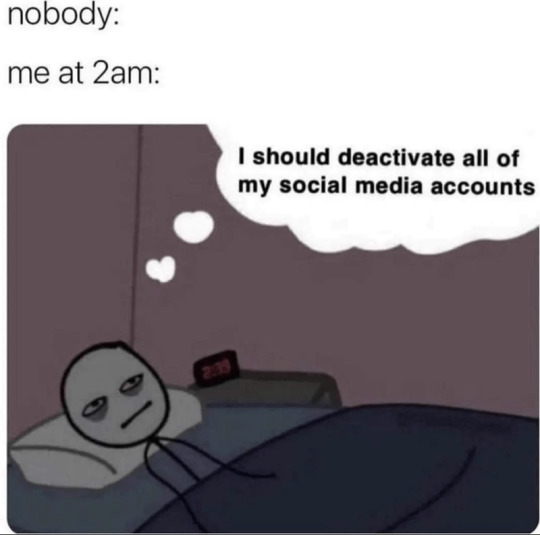
With the rise of social media platforms like Instagram, TikTok, and YouTube, microcelebrity culture has evolved. Influencers engage in "aesthetic labor," as they always modify their appearance to maintain and grow audiences. However, this isn't just about looking good, it's about attracting followers and building their brand. Therefore, it is important to choose what style of clothing to wear, what make up to use, what plastic surgery to do to attract the most audiences. Nowadays, the way influencers present themselves is closely connected with the concept of "pornification." This term refers to a male-oriented depiction of a heterosexual sexual display or "porno chic" aesthetics (Drenten & Gurrieri, 2019). Basically, the concept of pornification influences the mainstream culture, shaping what we think looks hot. You can see it all over social media, where both guys and girls are shown in super sexy, idealized ways. Think Kim Kardashian full of femininity with her sexy figure and flawless skin or Chris Hemsworth full of masculinity with his strong figure and muscles.
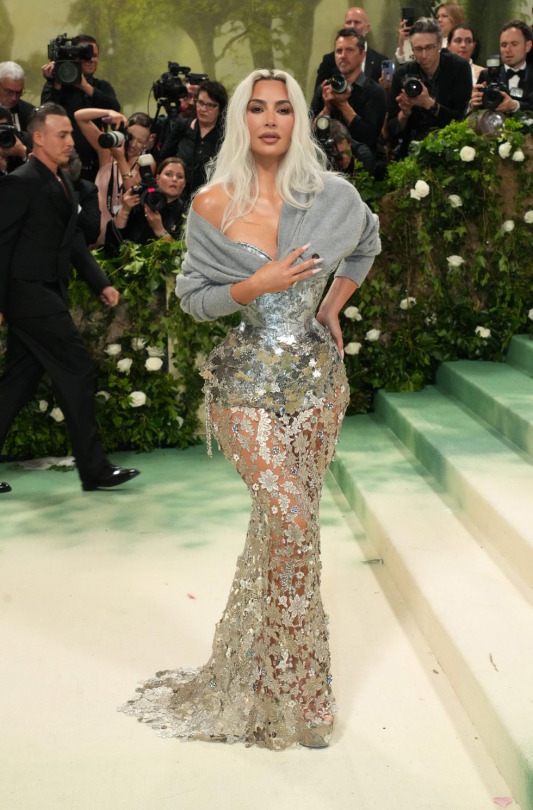

And Capitalists also use this concept to create brands like Brandy Melville. Brandy Melville promotes a very specific aesthetic which is being slim, youthful, and stylish. Their "one size fits all" policy is actually made for a very narrow body type, reflected and promoted the idealized, sexualized body standards seen on social media. Brandy Melville’s marketing strategy in social media is to create a impact trend by using popular girls who embody their brand’s goals as both models and staff. These girls will also need to post pictures of themselves wearing Brandy Melville clothes, creating a trend that spreads quickly online. Their followers will buy the clothes in order to be the same with this idealized image. Brandy Melville’s narrow beauty standards can cause body image issues and maintain unhealthy standards, perceive people to feel they need to look alike to be considered attractive and fashionable (Horton, 2024).

These unrealistic beauty standards are not really natural for most people, it pushes people to go to extremes to fit in by various methods, often leading to unhealthy behaviors. The constant chase for these impossible ideals can seriously mess with your self-esteem and body image, making you feel anxious and dissatisfaction with your look and your body. In serious situations, it may leads to Body dysmorphic disorder (BDD) which is a mental health condition where individuals obsess over perceived flaws in their appearance, leading to severe emotional distress and impairing daily life (Phillips, cited in Misman 2024).
What we can do is improve aesthetic skills, educate viewers about how unrealistic the standards of social media content are, support micro-celebrities who promote diverse body types and challenge traditional beauty norms, encourage those struggling with body image issues, and learn to accept ourselves.
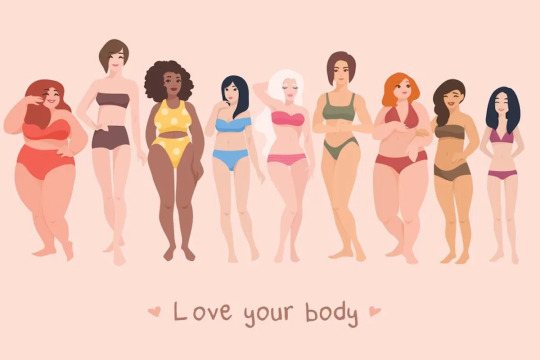
In this social media-driven world, it's time we call out and challenge these harmful norms and celebrate all body types and promote a healthier, more inclusive view of beauty.
References:
Drenten, J.,Gurrieri, L.,Tyler, M 2019, Sexualized labour in digital culture: Instagram influencers, porn chic and the monetization of attention In: Gender, Work and Organization, Gender, Work and Organization, pp. 1 – 26
Horton, A 2024. A very odd and ugly worldview’: the dark side of fast fashion brand Brandy Melville, The Guardian, viewed 10 June 2024,<https://www.theguardian.com/tv-and-radio/2024/apr/09/brandy-melville-hbo-documentary>.
Misman, N 2024, ‘ Week 8: Digital Citizenship and Health Education: Body Modification on Visual Social Media’, MDA20009 Digital Communities, Learning materials via Canvas, INTI International College Subang, 24 May, viewed 10 June 2024.
0 notes
Text
Week7: Digital Citizenship Case Study: Social Media Influencers and the Slow Fashion Movement
Hi, everyone, it's me again. Have you seen my last post about digital citizenship yet? If not, I highly recommend you read that first, because today’s topic ‘Social Media Influencers and the Slow Fashion Movement’ is very related with it.

In the rapidly developing society, the speed of updating fashion is also very fast, which leads to the concept of fast fashion that is suitable for modern social life style. However, fast fashion characterized by low prices and rapid updating which leads to serious environmental and social threats (Brewer 2019). For example, zara, a fast fashion brand which collections are maintained at a changinng frequency of fifteen days, that directly leads to overproduction and waste of products, resulting in serious environmental pollution, a large carbon footprint and a series of social problems (Domingos, Vale, Faria, 2022). At the same time, mass production requires manufacturers of cheap labor to produce products as fast as possible, which also implies the possibility of exploiting workers, such as poor working conditions and low wages to reduce costs (Brewer 2019).

In order to avoid the above mentioned environmental and social problems generated by the fast fashion concept, the slow fashion concept was born. Slow fashion is environmentally conscious and responsible, it is based on social and environmental responsibility, and it pursues product quality and longer life cycles. As a result, it is more expensive and slower to produce, which reduces pollutants and improves the environmentally sustainable production(Molpeceres et al,2022). Also in order to require sustainable fashion, there are four principles that are strictly required that I learned on class. First, the use of child labor is strictly not allowed. Then materials should also recycled and durable. Also, the production process must be ethical, socially and worker responsible. Finally, long-term partnerships are established throughout the supply chain for sustainable production, building a strong network that promotes the creation of sustainable fashion (Green in lai, cited in Misman 2024). The impact of slow fashion is huge for fashion industry and consumers. Environmentally, it reduces carbon footprints and environmental pollution. It influences consumer attitudes by encouraging ethical consumption and motivating them to choose more sustainable fashion products. In addition, it raises awareness of social responsibility and draws attention to labor rights and fair trade. Also, there are several reasons for consumers to choose slow fashion, including sustainable consumption, seeking environmentally friendly and durable products, personal values and so on.

However, in response to this kind of consumer psychology, some companies employ "greenwashing". This term refers to communication and marketing strategies adopted by companies to mimic sustainable actions for the purpose of marketing (Molpeceres et al,2022). Although it meets the consumers' sustainability needs, these practices involve making false or exaggerated environmental and social responsibility claims that mislead consumers.

In the competition between the fast fashion concept and the slow fashion concept, the desire for fashion is still growing, and people's needs have to be met by the most fashionable, newly launched products. That suits a phenomenon of the fashion industry is diametrically opposed to sustainability in nature, which implies that there is a contradiction between the concept of slow fashion and people's request for fashion(Brewer 2019). Moreover, globalization has pushed the production cycle ever faster, and the social media has pushed the spread of global trends (Brewer 2019). The influence of social media and influencers has two slides. For example, luxury brand dresses worn by influencers are posted on social media which are able to attract potential consumers, and related fast fashion brands may produce lot of similar products by copying them. At the same time, influencers can raise awareness and encourage followers to adopt slow fashion by sharing the concept of sustainable consumption and social responsibility, and not to follow the fast fashion brands. By providing real experiences and brand recognition, influencers can help build trust and interest in slow fashion products.
References:
Brewer, M 2019, ‘Slow Fashion in a Fast Fashion World: Promoting Sustainability and Responsibility’, Laws 2019,8,24,DOI:10.3390/laws8040024
Domingos M, Vale V, and Faria S. 2022. "Slow Fashion Consumer Behavior: A Literature Review" Download "Slow Fashion Consumer Behavior: A Literature Review" Sustainability 14, no. 5: 2860. https://doi.org/10.3390/su14052860
Misman, N 2024, ‘Week 7: Digital Citizenship Case Study: Social Media Influencers and the Slow Fashion Movement’, MDA20009 Digital Communities, Learning materials via Canvas, INTI International College Subang, 16 May, viewed 19 May 2024.
Molepeceres A, Castro J, Curiel C, Gonzale S 2022, Slow Fashion as a Communication Strategy of Fashion Brands on Instagram. Sustainability 2023,15,423
0 notes
Text
Week 6: What is Digital citizenship
Hey everyone! Its jiaqi07 here. Today, let's dive into the world of digital citizenship, a topic I'm sure we're all familiar with and have been a part of for years. But did you know, the power of digital citizenship is growing, impacting our economy, culture, and even the political engagement? We'll also explore how it influences platformization, hashtag movements, and activism. Let’s goooo!

We've all been digital citizen for years, but defining it can be tricky. One concept I personally resonate with is that a digital citizen is someone who, by developing a wide range of skills, can actively, positively, and responsibly engage in online and offline communities, be it local, national, or global (Council of Europe 2022, p.11). While becoming a digital citizen may seem straightforward, the power and potential impact of being one are significant. Digital citizens can freely discuss various topics like fashion, games, sports, and more. However, similar to the real world, these discussions can lead to disagreements, which may escalate into conflicts, abuse, cyberbullying, and other serious issues. To address these challenges, digital citizenship is managed through three interconnected layers of control: state regulation, technological controls, and localized non-governmental or entrepreneurial educational programs (McCosker 2016).
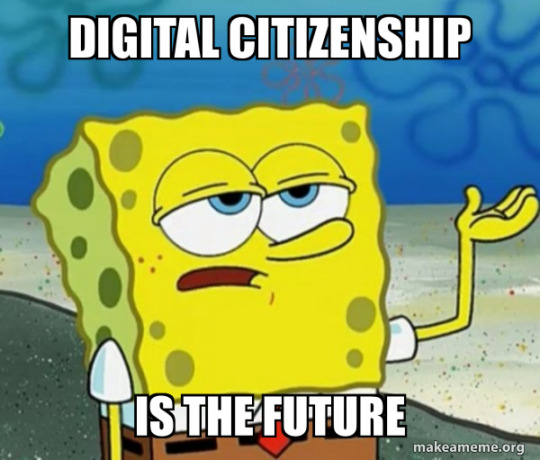
All the digital applications, websites, social media platforms serve as a tool for digital citizen to innovate, express and a platform for speaking and being heard. For instance, the reason of why Youtube is such a hit among all the video-sharing apps is because YouTube is designed as an inclusive space for expression, contrasting with exclusive platforms with normative restrictions (Gillespie 2010). At the same time, platformization refers to the evolution of social network sites into dynamic social media platforms, which improves their functionality and accessibility for users in all aspects of life, including the economy, culture, political engagement (Misman 2024). This transformation demonstrates how important these platforms are in shaping societal interactions and behaviours in the digital age.
Digital citizenship power is embodied in both hashtag movements and activism, influencing the economic trends, cultural norms, and political participation. Hashtag movements guide social media activities by grouping relevant content, organizing activities within or across networks, and shaping experiences and events (Misman 2024). From an economic perspective, companies post content about their products with brand or product hashtags in order to increase exposure and effectively push the product to people who are more likely to buy it through big data. Similarly, when consumers boycott a product, brand or company, they will be also using the relevant hashtags. Culturally speaking, hashtag campaigns, including the most famous #BlackLivesMatter hashtag, have sparked discussions about issues such as gender, race and so on topics. By bringing the issues to everyone, these movements are able to change public discourse by amplifying marginalized voices and highlighting systemic injustices, leading to shifts in cultural norms and values. At the same time, hashtag activism raises awareness and empathy in society. Politically, hashtags play a crucial role in mobilizing voters, organizing protests, and advocating for policy change.

As a digital citizen, by understanding the above elements of platforming, the hashtag movement, activism and so on, hopefully you will recognize the significant meaning of using digital platforms. By doing so, you can contribute to shaping a more inclusive and engaged global community, impacting the economic, cultural, and political spheres.
Reference:
Council of Europe (2022, p.11), Digital citizenship education handbook, Strasbourg France
Gillespie, T (2010). The politics of ‘platforms’. New Media & Society. 12. 347-364. 10.1177/1461444809342738.
McCosker, A 2016, Negotiating Digital Citizenship: Control, Contest and Culture Managing Digital Citizenship
Misman, N 2024, ‘ Week 6: What is Digital Citizenship? Hashtag Publics, Political Engagement and Activism’, MDA20009 Digital Communities, Learning materials via Canvas, INTI International College Subang, 25 April, viewed 7 May 2024.
0 notes
Text
Do you love Reality TV shows?
Hey, jiaqi07 here! This is my fifth week of my Digital Communities study, and it is all about diving into the world of reality TV. Today, I'm digging into the influence of social media on reality TV and fan culture, with a spotlight on the mega-hit 'Produce101.' Let's get into it!
Let me ask you something. Have you ever watch any reality TV shows? And how you feel about it. I must say for the most of the people who has ever watched any of the reality TV shows, you can not stop watching more. Also, the reality TV has been ruling TV for the last two decades, and one big reason? It's all about true emotions and that raw, unfiltered emotion is what hooks us in. (Misman 2024) Plus, social media has totally giving the fans new ways to dive into their favorite shows. Think Instagram, Facebook, Tumblr—they're all buzzing with fans connecting and gossiping about reality TV!

In today's media landscape, fandom communities are brought together by fans uniting online based on the same identity on social media platforms that creating a lively digital public (Misman 2024). Using Korea as an example, since K-pop fandom is one of the most dynamic features of contemporary culture and community building (Lee et al. 2019). K-pop fandom is not just exist in the K-pop stars like Psy, Bigbang, Blackpink, etc., but also exist in the reality TV shows, for instance <running man>, <single Inferno>, <Produce101>and so on.

<Produce101> is a reality series that produced by South Korea, it is about 101 trainees from various agencies completing with each other and only top 11 girls can became idols, decided by audiences vote (Shermin 2019). It's a prime example of how fandom shapes a show on social media, transforming fan culture into consumer culture. Fans are no longer just viewers; they're also consumers and producers. On the social media platforms, the fans talk about the reality TV show by posting photo or video editing, fan art, slogan and doll making and so on. (Bolin, Jiaying, Jingkun 2021) These platforms provide viewers with the opportunity to interact with participants and producers, and fan feedback influences the development of the program. This dynamic interaction between fans and the program influences the storyline and direction of the program, fostering a deeper connection with the audience and encouraging active participation.

However, everything has two sides. With the power of audiences have during the reality TV shows, it can not only makes someone or something became a hit but also leading to digital violence, especially against ordinary people. The fandom on social media is not only for audiences to engage with the good things but also engage with the hates, complains and so on. Although the name of reality TV means raw reality, some producers may make fake plots in order to increase the arguments between audiences, to promote their show more thrilling.
As audiences, consumers, and producers, it is important to distinguish between real and fake plots, think independently, discuss with other fans on social media, try to stay away from digital violence,
References:
Bolin, J, Jiaying, L, Jingkun, M, 2021, ‘Transformation of Fan Culture Under the Influence of Social Media’, Atlantis Press, 24 December, viewed 21 April 2024, <https://swinburne.instructure.com/courses/59779/files/30873345?wrap=1>.
Lee, S. H., Tak, J.-Y., Kwak, E.-J., & Lim, T. Y. 2019, ‘Fandom, Social Media, and Identity Work: The Emergence of Virtual Community Through the Pronoun “We”’, Psychology of Popular Media Culture, 28 October, viewed 21 April 2024, <http://dx.doi.org/10.1037/ppm0000259>.
Misman, N 2024, ‘Week 5: Digital Community and Fandom: Reality TV Case Study’, MDA20009 Digital Communities, Learning materials via Canvas, INTI International College Subang, 18 April, viewed 21 April 2024.
Shermin, S 2019, What makes Produce 101 so successful compared to other Korean survival shows?, Medium, viewed 21 April 2024, <https://medium.com/@ohmyshermin/what-makes-produce-101-so-successful-compared-to-other-korean-survival-shows-d00fd77e1c8>.
1 note
·
View note